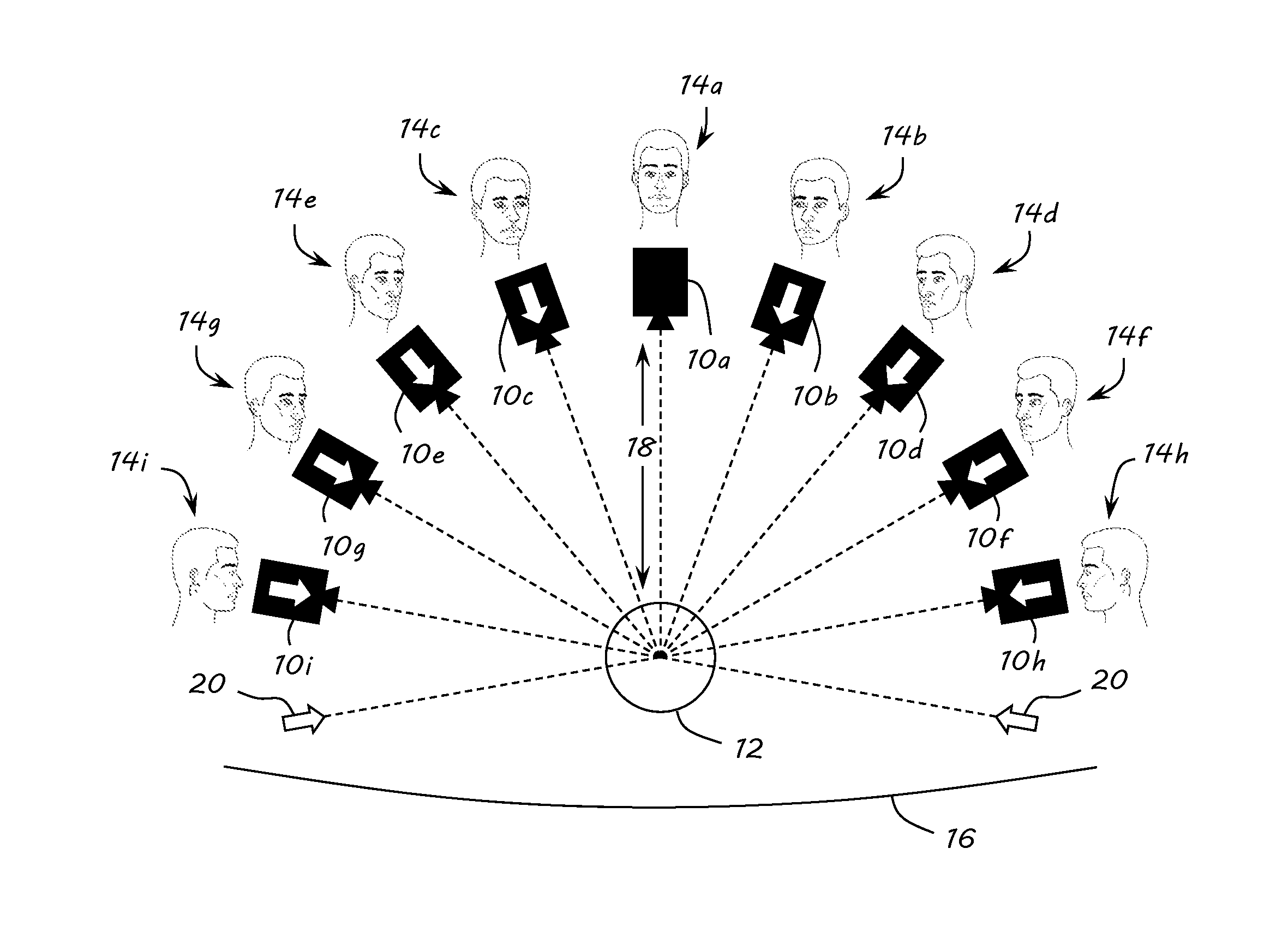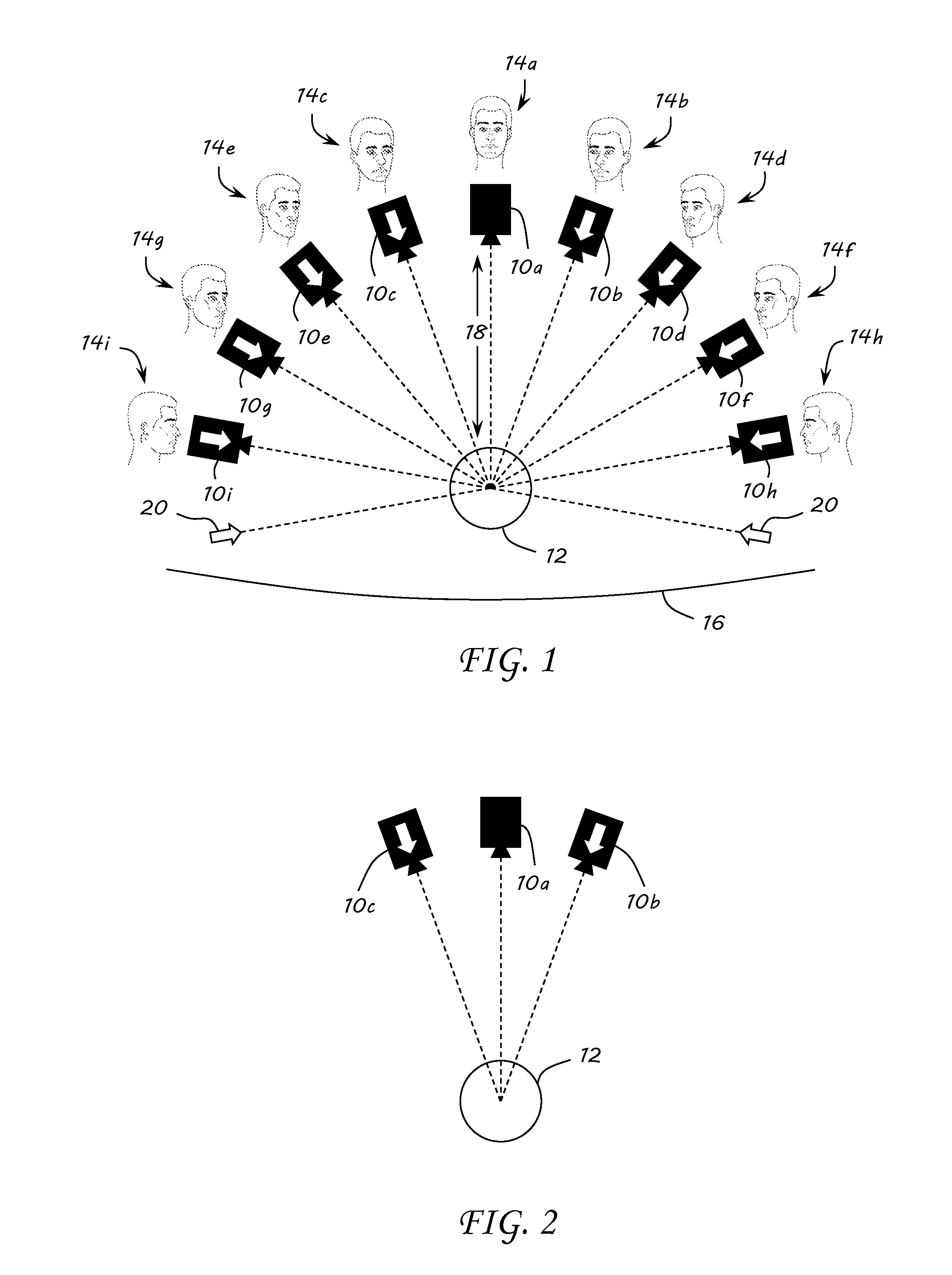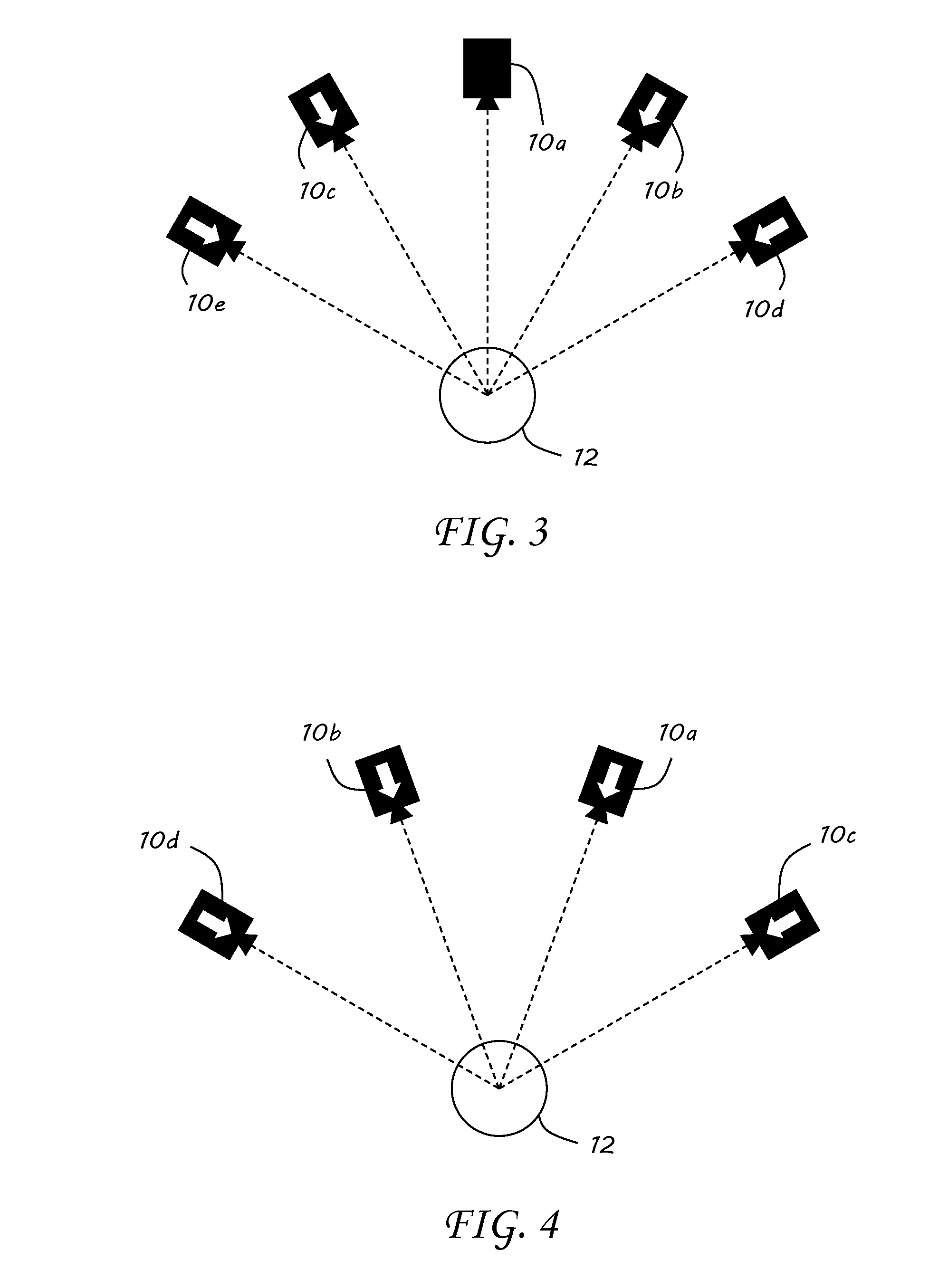Non-Contact Assessment of Cardiovascular Function using a Multi-Camera Array
a multi-camera array and assessment technology, applied in the field of physiological functions that are not sensitive to contact, can solve the problems of not being suitable for long-term/repeated monitoring or with individuals with high skin sensitivities, wasting time and resources, and not being suitable for long-term/repeat monitoring
- Summary
- Abstract
- Description
- Claims
- Application Information
AI Technical Summary
Benefits of technology
Problems solved by technology
Method used
Image
Examples
Embodiment Construction
[0030]Photoplethysmography (PPG) relies on characteristic changes in the optical absorption of tissue due to pulsatile (arterial) blood flow in peripheral vasculature. Sensors for observing the photoplethysmographic effect have traditionally required contact with the skin surface. Recent advances in non-contact imaging PPG have demonstrated that measures of cardiopulmonary system state, such as pulse rate, pulse rate variability, and respiration rate, can be obtained from a participant by imaging their face under relatively motionless conditions. A critical limitation in this method that must be resolved is the inability to recover these measures under conditions of head motion artifact.
[0031]Embodiments of the invention address the need in the art by utilizing multiple synchronized, visible spectrum imagers positioned in an array centered on an imaged participant. Increased measurement error during motion artifact is mitigated by the embodiments of the invention by the increased di...
PUM
 Login to View More
Login to View More Abstract
Description
Claims
Application Information
 Login to View More
Login to View More - R&D
- Intellectual Property
- Life Sciences
- Materials
- Tech Scout
- Unparalleled Data Quality
- Higher Quality Content
- 60% Fewer Hallucinations
Browse by: Latest US Patents, China's latest patents, Technical Efficacy Thesaurus, Application Domain, Technology Topic, Popular Technical Reports.
© 2025 PatSnap. All rights reserved.Legal|Privacy policy|Modern Slavery Act Transparency Statement|Sitemap|About US| Contact US: help@patsnap.com



